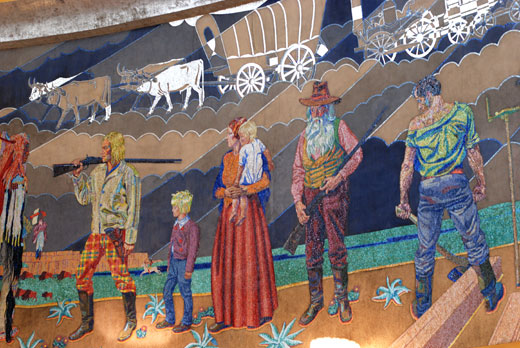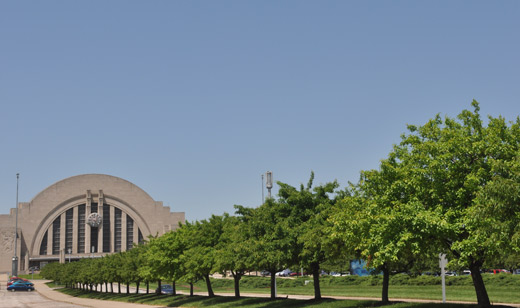
A group of budding designers, architects and urban planers from the University of Cincinnati's College of Design, Art, Architecture and Planning are helping to breathe new life into one of the Queen City's most notable landmarks.
Thanks to a collaborative effort between
Cincinnati Museum Center, DAAP and UC's
Niehoff Urban Studio, 28 undergraduate and graduate students spent the fall quarter developing proposals in the aptly named course, "Envisioning a Sustainable Future for Cincinnati Museum Center and its District."
"They're looking collectively at this," says course co-instructor Michael Zaretsky, assistant professor of architecture at DAAP. He explains that the students split into five working groups, with each focusing on different aspects of sustainable development in the Queensgate neighborhood, where the Museum Center is located. Some students focused on the area itself, developing plans for an eco-industrial district complete with an urban greenspace that flows from the district's center to Cincinnati's downtown business district. Others focused on the Museum Center's home, historic Union Terminal.

Whether planning for the building or the area, all focused on sustainable design, multimodal transportation (think bike lanes, park-and-ride access, and walkable greenspace) and transforming Queensgate from a peripheral light-industrial wing of the city to a core neighborhood with a range of business and social attractions.
Architecture graduate students Erica Stauffer and Gary Williams took on Union Terminal as their project. Their proposed redesign of the famous structure includes reopening its signature ramps to pedestrian and bicycle traffic, and a three-tiered internal layout that allows the building to serve as museum, gathering place and retail/social destination.
Both students said they understand their ideas may never make it past the finely-crafted architectural model and design proposal that they drafted. But an exact execution of ideas isn't the point, they say.
"The important point is envisioning an idea," Stauffer says. "It can really be the start of what the design can be."
Williams added that he gained a lot from the wide-open nature of the project.
"I think part of the point was not having budgets, and having less limitation than if we were on contract," he says.
And according to Zaretsky, that's a key to the project. Officials from Cincinnati Museum Center interviewed the students early in December to incorporate their proposals into their long-term planning for the facility. And the students' work is on display in the Union Terminal Rotunda, giving those most affected by the space - the people who use it for work and pleasure - a chance to consider, discuss and envision these students' sustainable ideas for the Cincinnati icon's future.
Writer: Matt Cunningham
Photography by Scott Beseler.
Enjoy this story?
Sign up for free solutions-based reporting in your inbox each week.